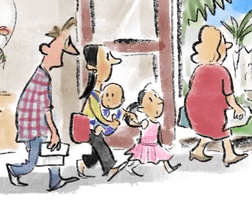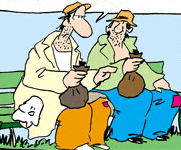CartoonStock Now Stocks Editorial Cartoons
Skip to commentsCartoonStock, “the world’s largest online database of cartoons for licensing, products, and original art,” is now carrying editorial cartoons, a new category similar to their politics grouping but more explicit. Their politics offerings seems to be close to the current Washington Post opinion page cartoons – a mix of New Yorker-style and editorial cartoons; while their editorial cartoons division (also found under “breaking news”) is strictly cartoons and cartoonists of the editorial breed.

As an introduction to the new Editorial division CartoonStock engaged political writer Andrew Welhouse to write about the importance and the role editorial cartoons have and do play in society and politics.
Cartoons make us laugh.
Politics, in general, does the opposite.
I’ve seen it time after time when I tell someone what I do for work—nothing wipes a smile off a person’s face faster than admitting you work in politics.
I get it. Politics is dirty. It’s divisive. It’s angry. Maybe you’ve seen it in your own life: on social media, at work, or even in your relationships.
So, if politics is so full of anger, why do political cartoons work so well?
There are some things to quibble about Andrew’s essay.
Among the reasons given for the power of editoons is the humorous content.
I think that the great editorial cartoonists from Rollin Kirby to Herblock to Paul Conrad relied very little on humor. Possibly the great Pat Oliphant changed that.
Also: “the origin of the elephant and donkey symbols, created in Thomas Nast’s cartoons in the 1800s” is a common misconception. Those symbols of the political parties were in existence before Nast.
You may want to surf the CartoonStock site and its blog for more about the cartoon profession and industry.
featured image by Charles Barsotti


Comments
Comments are closed.